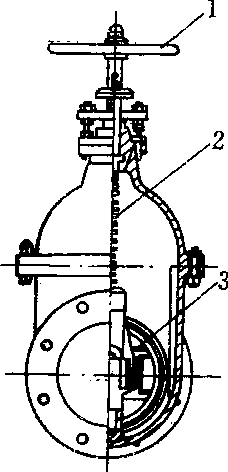闸阀
又称“球阀”、“闸门阀”。一种装在管路上作为开关及调节流量的设备。产品分止阀、闸阀等。
闸阀valve
安装在离心泵、混流泵出水管路上的阀门。作用是:
❶水泵起动前,关闭阀门,可用真空泵抽气充水;
❷离心泵起动时关闭阀门,可降低动力机的功率与起动电流;
❸可用来调节水泵出水流量的大小。混流泵起动时,可以闭阀也可开阀,因它对动力机的功率与起动电流影响不大。而轴流泵起动时,则需开阀,目的是降低动力机的功率与起动电流。

闸阀外形与构造
1. 转盘 2.转轴 3. 闸门
| 词条 | 闸阀 |
| 类别 | 中文百科知识 |
| 释义 | 闸阀又称“球阀”、“闸门阀”。一种装在管路上作为开关及调节流量的设备。产品分止阀、闸阀等。 闸阀valve安装在离心泵、混流泵出水管路上的阀门。作用是:
闸阀外形与构造 1. 转盘 2.转轴 3. 闸门 |
| 随便看 |
开放百科全书收录579518条英语、德语、日语等多语种百科知识,基本涵盖了大多数领域的百科知识,是一部内容自由、开放的电子版国际百科全书。